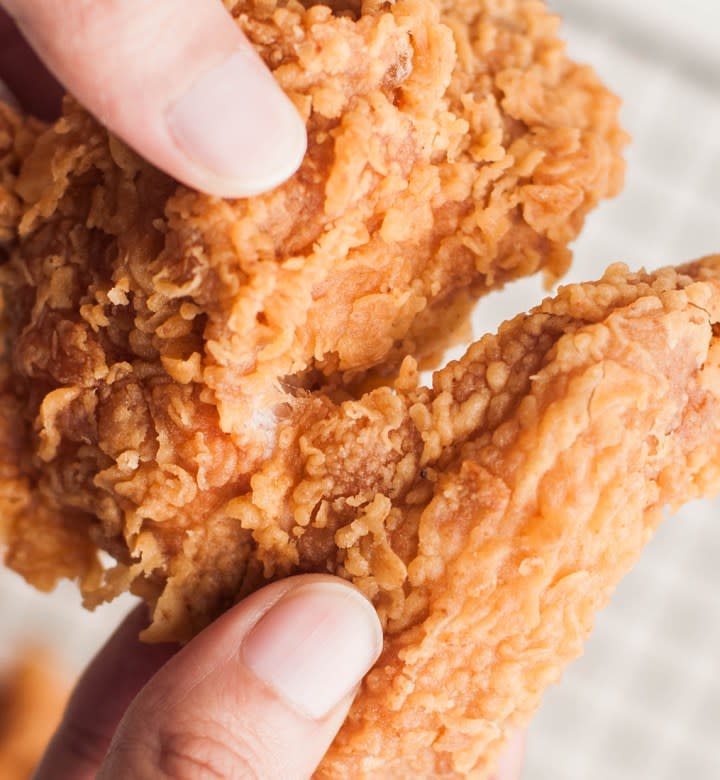What’s the Best Oil for Frying? (Spoiler: It’s Not Olive Oil)

PureWow Editors select every item that appears on this page,, and the company may earn compensation through affiliate links within the story You can learn more about that process here. Yahoo Inc. may earn commission or revenue on some items through the links below.
Read the original article on Purewow.
You’ve set your sights on a batch of homemade fried chicken (we’re totally jealous) and you have your mise en place ready for takeoff. But beyond the seasoning and dredging, there’s just one tiny concern: the actual business of deep-frying. You can handle the mess, but that’s a lot of bubbling oil, right? Wait—what’s the best oil for frying anyway?
If you want the short answer: Vegetable oil is the best oil for frying. It’s inexpensive, easy to find at any store, has a neutral flavor and a high smoke point. Why does that matter? Allow us to explain further.
Avocado Oil vs. Olive Oil Which One Is Healthier (and Which Should I Cook With)?
First, What Is Smoke Point and Why Does It Matter?
Smoke point refers to an oil’s resistance to heat. In other words, the smoke point is the temperature at which an oil will start to smoke, aka burn. You want to avoid that: Cooking an oil past its smoke point will not only make it taste bitter and rancid, it will also start to decompose, losing nutrients and giving off smoke (a carcinogen). Vegetable oil has a smoke point of about 430°F—compared to 350°F for extra-virgin olive oil—making it ideal for most things you’d fry at home. (For reference, most deep-frying is done at temperatures between 350°F and 400°F.)
Why Vegetable Oil Is the Best Oil for Deep Frying
Like we said, vegetable oil is best for frying, and while, yes, technically any oil derived from a plant can be called “vegetable” oil, we’re referring to the vegetable oil that says it on the bottle. (It’s usually a blend of a few refined vegetable oils.) While we wouldn’t use plain oil vegetable oil for a salad dressing or drizzle, it’s our go-to for frying. Here’s why:
Comparing vegetable oil to a few other options on the shelf will make the choice for frying obvious.
What Oils Are Good Options for Pan Frying?
Pan frying (not to be confused with sautéing) is similar to deep frying, you just use less oil. With that in mind, you’ll want to use one with the same properties that make it good for deep frying: high smoke point and neutral flavor. Our first choice is still vegetable oil, but you have other options too. Avocado oil has a smoke point 520°F with health benefits nearly identical to olive oil, and sunflower oil has a smoke point of 450°F with a mildly nutty flavor. Both oils are expensive, but since you’re using less at once, it’s not as big of a factor.
What Oils Should You Not Use for Frying?
Although it has a smoke point of about 390 to 400°F, olive oil isn’t a great choice for deep frying, mainly because its flavor isn’t neutral enough and the cost is too steep. (Note that in some instances, the flavor of olive oil might be a desirable factor in deep-frying: think fried artichokes or other Mediterranean dishes.) Coconut oil is often touted for its healthy saturated fat content, but it has a low smoke point of 350°F that makes it incompatible with deep frying.

